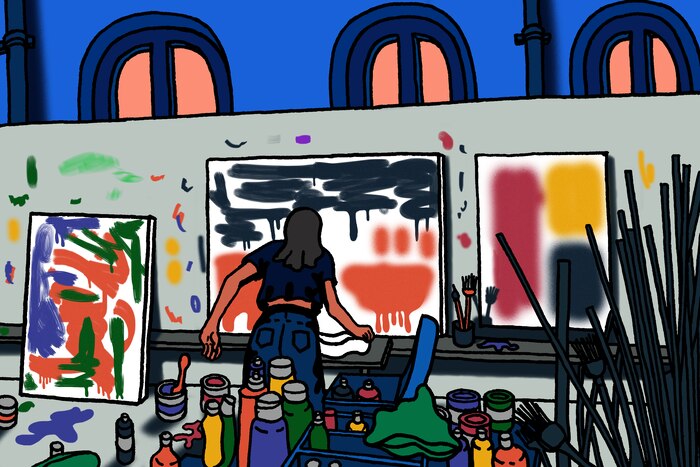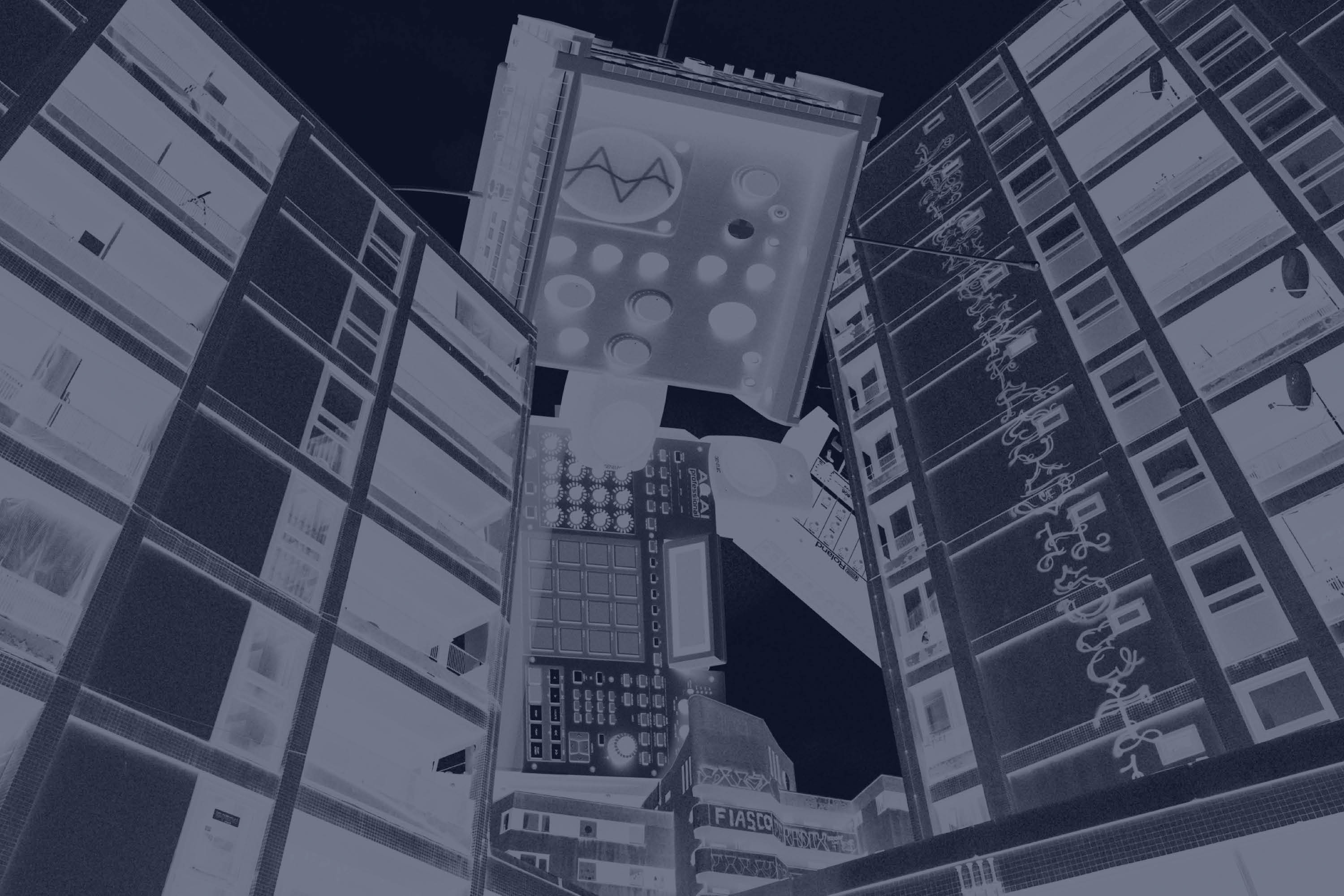Fertile Chaos: The Growth of Berlin’s Creative Industry
Dennis Pohl on the historical foundation of the German capital’s rich cultural sector

There’s a sense of stimulating dysfunction in Berlin that rarely exists in other Western cities of a similar size, and there are two factors that keep turning this mess into a fertile chaos. First, almost three decades after the reunification, Berlin is still the second cheapest major city in Europe, right after Lisbon, while at the same time functioning as the capital of the EU’s most economically potent country. The average wage is lower than in the rest of Germany, but the relatively low rents give people the freedom to try out alternative work concepts, which opens up the possibility of working less and idling more.
Second, there is still plenty of unused space. This is partly due to the fact that Berlin’s metropolitan area is eight times the size of Paris, but still has fewer inhabitants than before World War II. These two factors provide the immaculate formula for a booming cultural sector – an abundance of time plus plenty of space to grow equals room for creative experimentation. In other words: Berlin harbors the spots necessary for the famed three-day raves, and residents have the capacity to organize and attend them.
Not surprisingly, this leads to some mouth-watering numbers. Berlin currently has a whopping 200 museums and art spaces, roughly 400 galleries, seven professional orchestras and 27 theater ensembles, to name just a few official benchmarks, and it attracts the people needed to keep everything running. According to a government report from 2011, there were roughly 20,000 professional artists living in the city’s 96 districts – which means that the percentage of artists in relation to “normal” occupations is two-and-a-half times higher in Berlin than elsewhere across Germany’s average population.
The “Berliner Luft”
How did Berlin morph into this seemingly global behemoth of casual cool in the first place? Most conversations around the transformation tend to be dissatisfyingly sparse, relying on the same old mantra of historical milestones: First the Wall came down, somebody miraculously discovered techno and then there was Berghain. Obviously, it didn’t go all that smoothly. In fact, the real starting point of Berlin as we know it today dates back into the times of Bismarck, roughly 100 years before techno.
West Berlin was a place where things were renegotiated, where people could do what they wanted and didn’t need to bow to financial pressure.
In the late 19th century Berlin was already a place of escapism, though the Kaiser’s censorship was ever-present. Nevertheless, there was an atmosphere that prompted visitors and locals alike to fantasize about the unbridling effect of the famed “Berliner Luft,” “the nervous, endlessly quivering Berlin air,” as prominent journalist and lyricist Konrad Alberti put it in 1889, “which works upon people like alcohol, morphine, cocaine, exciting, inspiring, relaxing, deadly.” Berlin was already an infamous brand: Go there to have a good time.
A few centuries later the debauchery got even worse. (Or better, depending on your perspective.) The economic crisis following World War I was marked by a mixture of inflation, poverty and desperation. The fabled Golden ’20s were in fact fueled by a crawling moral and social decay within the population. War widows – and basically everyone else – would do anything to get their hands on some cash, even though that cash was basically worthless. At one point in the 1920s, the exchange rate was one American dollar to four trillion Deutsche Marks.
Within a mile around Kurfürstendamm you could find a showcase of all human desires imaginable. There were the transvestites at the Eldorado, places specialized in pregnant sex workers and much more. Consequently, the city got flooded with Europe’s decadent elites, which, due to the enormous inflation, was basically everyone who could afford the trip and had a fetish to satisfy. Imagine these times like a night at KitKat Club before easyJet – and way wilder.
Some five years later the Nazis closed all the clubs, chased and exterminated queer communities and subsequently brought the worst possible ruin to the city. By 1945, Berlin was a wasteland. 80% of the inner city had been destroyed by bombs, while the population suffered from starvation and was left traumatized by the heavy fights between the Allied Forces and the Red Army.
Misfits and Weirdos from the West
West Berlin, surrounded by the newly established GDR, emerged as an island, a bold middle finger to the East, even though there was little economic prosperity in the West. Few companies would risk setting foot in a place where you had to pass notoriously hostile customs, where the population consisted primarily of soldiers and old residents and free travel was ostensibly a given but in reality a joke.
As West Berlin faced impending desertification, the government in Bonn laid out some bait: To encourage people to move to Berlin, starting in 1963 it gave out stipends and exemptions from the then-mandatory 18 month-long military service for newcomers. And guess who was attracted by that? The oddballs, the queers, the misfits and the weirdos from the West.
Triggered by the experience of living in a place ruthlessly divided by the Iron Curtain, the city was a real dystopia that was claustrophobic and optimistic at the same time.
If you ever wondered why the cultural scene in Berlin sometimes feels like it’s restlessly under construction, it is because the groundwork of it was laid in those times. West Berlin was literally a start-up, but not in the intrusive, turbo-capitalist sense of the term today. In those days West Berlin was a place where things were renegotiated, where people could do what they wanted and didn’t need to bow to financial pressure – rents were dead cheap, especially in Kreuzberg, which today is one of Berlin’s most expensive neighborhoods. Life mostly took place at night in clubs like Park or Dschungel. There was an amateurish spirit around, the urge to make things happen. Triggered by the experience of living in a place ruthlessly divided by the Iron Curtain, the city was a real dystopia that was claustrophobic and optimistic at the same time.
It was this environment that led rock stars like David Bowie and Iggy Pop to rent an apartment on Schöneberg’s Hauptstraße in the late ’70s. Nights were spent at gigs by progressive bands, with early morning drinks at one of the many gay bars around Nollendorfplatz. A vigorous punk movement formed around Kreuzberg, giving birth to an abundance of influential acts and people like the omnipresent scene figure Monika Döring. In the ’80s she took the heat of the moment to establish a venue like Loft, where many now well-known international artists played before anybody else ever heard of them: Tuxedomoon, Run D.M.C, Wire, Cocteau Twins, Diamanda Galás, you name it. Döring treated her club like a 19th century literary salon, where people ate, drank, talked and slept together, and where the door was always open.
This scene alone would have provided a fertile breeding ground for a lively cultural scene. At least it did in London or New York, which experienced similar developments, though in different settings. But by the late ’90s, those cities slowly started to suffocate under rising rents and other byproducts of becoming cultural hubs. Berlin was different.
Operating Underground
When the wall finally came down in late 1989 it unleashed a scene that had been operating at a similar creative pace, but with an enforced sense of secrecy. In the GDR artists had to make sure that everything remotely underground would literally stay underground – at all costs. The Stasi, the communist regime’s secret police, were known to be ruthless, and they were everywhere. Over the years, this evolved into an unparalleled ingenuity in terms of finding secret places to make things happen.
When these two scenes suddenly collided it was a match made in heaven, with the added bonus that the reunification supplied people with thousands of run-down buildings that, at the time, nobody had the slightest clue what to use for. It created the habitat where places like Bunker, Tresor and others could take root – and all the misfits could once again find their homes.
But how does this story end? One might ask, “Hasn’t Berlin become too cool for its own good long ago?” The salad days of luxurious trial and error do seem far away. Berlin has the most rapidly increasing rents among any other world capital. Techno has turned into folklore in many places and, despite many well-meaning efforts to keep things exploratory and DIY, the creative scenes have naturally become more established.
Still, the influx of creative people has not come to a rest yet. And if anything, there’s still an abundance of space, predominantly on the largely unexplored outskirts. But of course, Berliners would never admit that. Many call it the Berlin fatigue: an indifference to or rejection of blind celebration of the status quo, paired with a strangely unanimous notion that the best times are long gone.
No matter who you ask, whether someone who has lived in Berlin since the ’80s or a student who just moved here two years ago, they all are equally convinced that the golden era is over, and that they barely caught the fringes. But then again, what does “over” in this context really mean? Maybe it’s the moment when the fantasy of who you would become in a certain place gets confounded by the inescapable persistence of your old self.
So it makes perfect sense that Berlin might be “over” to the individuals who had their fair share for years. For others whose fantasy is still alive and kicking, though, the influx of creatives has not yet come to a halt, new projects are frequently popping up on every corner and there’s still an abundance of the ingredients which have sparked the city’s evolution so many times before: space and time. Mix that with a new generation of makers and the future of the city will maybe look different from what you are used to – but Berlin will certainly not be over anytime soon.

